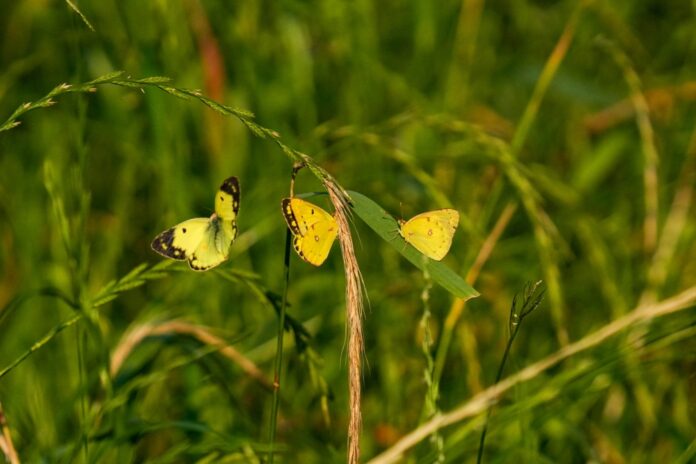Over the long, slow process of natural selection, species survive by adapting to their environments by developing traits suited to those environments. The insulating coat and subcutaneous fat of polar bears allow them to live in the Arctic ice. Kangaroo rats are able to survive in the desert because they don’t need to drink water; they’ve evolved the ability to survive on the small amount of moisture they get from the seeds they eat.
But environments can change rapidly. A volcanic eruption might cause average temperatures to drop for several seasons, and a wildfire can destroy food sources. When something like this happens, a species may suddenly find that adaptations developed over millions of years of natural selection are no longer beneficial. This is called evolutionary mismatch, and it can have potentially devastating results.
Climate Change Drives Adaptation
Species respond to environmental change in three different ways, says Melanie Hopkins, curator and chair of the Division of Paleontology at the American Museum of Natural History. “They either move to some place where the environment’s better, they adapt to the environment, or they go extinct.” When there is nowhere to go, and the environment is changing faster than evolution can keep up, extinction may be inevitable.
However, in some cases, the opposite is happening — evolution is happening too fast. Lauren Buckley is one of the scientists taking a close look at the role of climate change in creating evolutionary mismatch. Buckley studies evolution and ecology at the University of Washington in Seattle. “For a long time, there was an assumption that organisms wouldn’t be able to evolve fast enough for some of these shifting environmental pressures,” she says. But her research suggests that in some cases, evolution is potentially moving too fast.
Read More: Climate Change Is Altering Animal Brains And Behavior
Studying Colias Butterflies in the Rockies
Buckley and her lab have been studying Colias butterflies in the southern Rocky Mountains and finding a strong selection effect in response to temperatures at different altitudes. This, she says, can set up evolutionary mismatch.
For example, in the absence of climate change, you typically would expect butterflies at the top of the mountain, where it’s colder, to evolve darker wings so they could absorb more light and be active during more of the day — say, in the early morning when it’s colder.
Some of the populations studied are indeed showing that adaptation. But that’s the opposite of what you’d expect as temperatures get warmer as a result of climate change. “That would be a temporal evolutionary mismatch, where the initial evolution puts these organisms in a worse place than they would have been otherwise.” In other words, their initial adaptation is setting them up for trouble in the future.
Relocating to a different environment is one way to escape the detrimental effects of environmental change, but that response doesn’t always benefit the species in the long run. Buckley also studies lizards that move around to different habitats as conditions change. But while this strategy is useful in the short term, it might backfire as climate change becomes more extreme and the lizards have nowhere else to go. “They’re basically in a worse situation than they would have been if they were feeling that stress over time and gradually evolving,” she says.
Read More: The Butterfly with a Dozen Disguises
For Many, Evolution Won’t Be Fast Enough
Still, despite many examples of animals adapting as the world changes — birds changing their nesting times, mustard plants flowering earlier — for most species, evolution does not move as fast as climate change.
Various factors, such as the rate of reproduction, the amount of genetic variation in the population, and the time it takes individuals to reach maturity, influence how fast and how well species respond to environmental changes. But, according to a 2019 study that looked at how arachnids, insects, amphibians, reptiles, birds, and mammals in 13 countries were responding to changes in temperature and/or precipitation, it is likely that many species will be unable to adapt quickly enough to survive climate change.
Sadly, many will become victims of evolutionary mismatch, trapped in a world they are no longer adapted to, the survival of their species in peril.
Read More: Does Evolution Take Millions of Years or Does it Happen in Sudden Bursts?
Article Sources
Our writers at Discovermagazine.com use peer-reviewed studies and high-quality sources for our articles, and our editors review for scientific accuracy and editorial standards. Review the sources used below for this article:
Avery Hurt is a freelance science journalist. In addition to writing for Discover, she writes regularly for a variety of outlets, both print and online, including National Geographic, Science News Explores, Medscape, and WebMD. She’s the author of “Bullet With Your Name on It: What You Will Probably Die From and What You Can Do About It,” Clerisy Press 2007, as well as several books for young readers. Avery got her start in journalism while attending university, writing for the school newspaper and editing the student non-fiction magazine. Though she writes about all areas of science, she is particularly interested in neuroscience, the science of consciousness, and AI–interests she developed while earning a degree in philosophy.
Source : Discovermagazine







